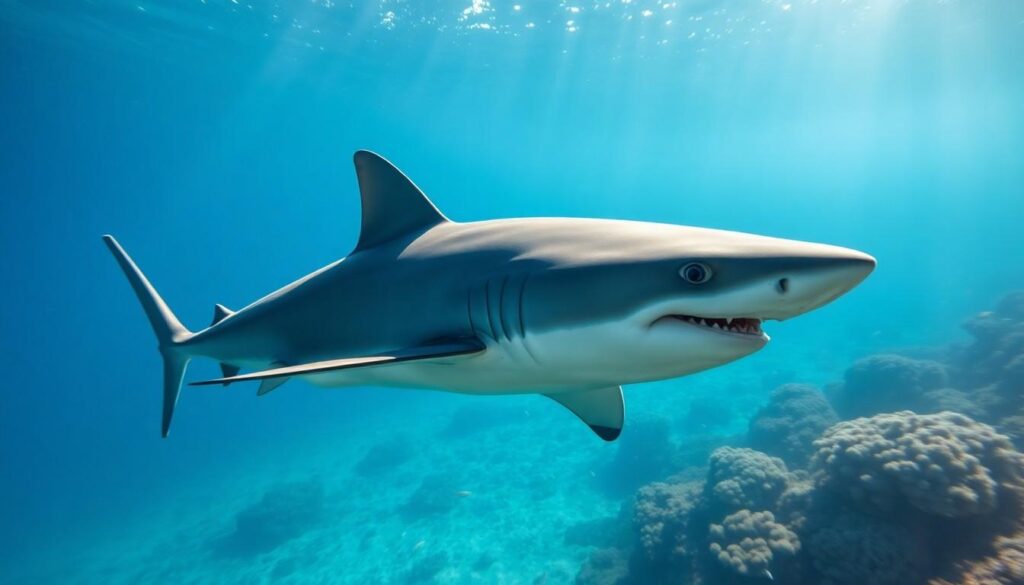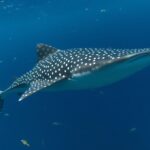When it comes to speed in the ocean, few creatures can match the mako shark. Known as one of the fastest fish in the world, the shortfin mako can reach astonishing speeds of up to 45 miles per hour. This incredible agility not only makes it a formidable predator but also a fascinating subject for marine enthusiasts.
Understanding how fast a mako shark can swim reveals more than just numbers; it highlights the adaptations that allow these sharks to thrive in their aquatic environment. So, whether you’re a curious learner or a seasoned ocean lover, dive into the world of mako sharks and discover what makes them the ultimate swimmers of the sea.
Overview of Mako Sharks
Mako sharks belong to the Lamnidae family, characterized by their streamlined bodies and powerful builds. Two species dominate: the shortfin mako (Isurus oxyrinchus) and the longfin mako (Isurus paucus). The shortfin mako, known for its incredible speed, typically reaches lengths of 10 to 13 feet, though some specimens exceed 15 feet. In contrast, the longfin mako tends to be longer, but less common.
Mako sharks exhibit distinct physical traits:
| Trait | Shortfin Mako | Longfin Mako |
|---|---|---|
| Average Length | 10-13 feet | 10-14 feet |
| Maximum Length | Up to 15 feet | Up to 14 feet |
| Weight | 200-300 pounds | 200-400 pounds |
| Speed | Up to 45 mph | Up to 31 mph |
Habitat and Distribution
Mako sharks inhabit warm and temperate ocean waters worldwide. You’ll find them in both coastal and open ocean environments, often associated with areas rich in prey such as squid, fish, and other marine animals.
Feeding Behavior
Mako sharks are apex predators. Their diet consists mainly of:
- Tuna
- Swordfish
- Squid
- Other pelagic fish
Their hunting technique involves swift acceleration and agility, allowing them to catch fast-moving prey.
Reproductive Characteristics
Mako sharks display ovoviviparity, meaning the embryos develop internally and give live birth. A female can produce between 4 and 25 pups per litter, with a gestation period that ranges from 15 to 18 months. Pups measure about 2 feet at birth, emphasizing the shark’s role in the marine ecosystem as an effective predator from an early age.
Conservation Status
The conservation status of mako sharks varies. The shortfin mako is listed as endangered by the International Union for Conservation of Nature (IUCN) due to overfishing and habitat loss. Conservation efforts focus on sustainable fishing practices and habitat protection to preserve this remarkable species.
Mako sharks are exemplary representatives of oceanic speed, showcasing unique adaptations that equip them for success in their environment. Their predatory efficiency and rapid swimming abilities mark them as crucial components of marine ecosystems.
Speed Capabilities of Mako Sharks
Mako sharks are known for their astonishing speed and agility, making them prime predators in the ocean. Their adaptations allow them to reach remarkable speeds, setting them apart from other marine creatures.
Maximum Recorded Speed
The shortfin mako holds the title for the fastest shark species. It can reach maximum speeds of 45 miles per hour (72 kilometers per hour). This exceptional speed enables it to hunt effectively, catching swift prey like tuna and swordfish.
| Shark Species | Maximum Speed (mph) |
|---|---|
| Shortfin Mako | 45 |
| Great White Shark | 25 |
| Tiger Shark | 20 |
| Hammerhead Shark | 20 |
Comparison with Other Shark Species
When compared to other shark species, mako sharks stand out in terms of speed. While the great white shark reaches 25 mph, other sharks like the tiger and hammerhead generally swim at about 20 mph. Mako sharks’ speed provides them with a distinct advantage in both hunting and evading threats.
| Comparison Shark Species | Speed (mph) |
|---|---|
| Shortfin Mako | 45 |
| Great White Shark | 25 |
| Tiger Shark | 20 |
| Hammerhead Shark | 20 |
Factors Influencing Mako Shark Speed
Mako shark speed is influenced by several key factors. Understanding these factors reveals why these sharks excel in their aquatic environment.
Body Structure and Anatomy
Mako sharks possess streamlined bodies, which significantly enhance their swimming capabilities. Their muscular build, along with a pointed snout, contributes to reduced drag in the water. Key anatomical features include:
| Feature | Description |
|---|---|
| Body Shape | Hydrodynamic, tapered configuration |
| Tail Structure | Powerful caudal fin for propulsion |
| Muscle Composition | High density of fast-twitch muscle fibers |
| Fins | Stabilizing dorsal and pectoral fins |
These adaptations allow mako sharks to achieve remarkable speeds while maneuvering efficiently. Their anatomy not only aids in hunting but also helps evade larger predators.
Environmental Conditions
Environmental factors play a crucial role in how fast mako sharks can swim. Water temperature, current strength, and prey availability can influence their speed. Significant conditions include:
| Condition | Impact on Speed |
|---|---|
| Water Temperature | Optimal temperatures enhance metabolism |
| Ocean Currents | Strong currents can hinder progress |
| Prey Density | Abundant prey encourages high-speed pursuits |
In warmer waters, mako sharks exhibit increased activity levels, directly correlating with improved swimming speeds. Understanding these environmental factors helps illustrate the adaptability of mako sharks in various marine settings.
Implications of Mako Shark Speed
Mako sharks’ exceptional speed influences their predatory behavior and impacts the marine ecosystem significantly. Understanding these implications reveals their role in maintaining oceanic health.
Predatory Behavior
Mako sharks utilize their speed as a critical asset while hunting. Their high-velocity swimming allows them to catch agile prey, such as tuna and swordfish. The following traits enhance their predatory skills:
| Trait | Description |
|---|---|
| Speed | Reaches up to 45 mph |
| Agility | Executes quick turns and dives |
| Echolocation | Detects prey effectively |
| Ambush Tactics | Uses speed for surprise attacks |
Mako sharks often employ ambush tactics, swiftly closing the distance between themselves and prey. Speed enables them to tackle larger, faster fish, making them efficient hunters in their habitat.
Impact on Ecosystem
Mako sharks play a vital role in regulating fish populations within their ecosystems due to their predatory nature. Their high speed contributes to the following ecological functions:
| Function | Description |
|---|---|
| Population Control | Maintains balance among species |
| Prey Diversity | Encourages a variety of prey species |
| Food Chain Stability | Supports overall marine health |
The presence of mako sharks indicates a healthy ocean environment. Their predation helps sustain fish populations, contributing to biodiversity and the stability of marine ecosystems. Understanding these effects underscores the importance of conservation efforts to protect mako sharks and their habitats.
Conclusion
Mako sharks are truly fascinating creatures that showcase the incredible capabilities of marine life. Their unmatched speed not only sets them apart in the ocean but also plays a crucial role in their survival as apex predators. Understanding their unique adaptations helps you appreciate the delicate balance of marine ecosystems.
As you delve deeper into the world of mako sharks, you’ll find that their presence is vital for maintaining healthy ocean environments. Supporting conservation efforts ensures that future generations can marvel at these remarkable swimmers. Whether you’re a casual observer or a dedicated enthusiast, the journey into the life of mako sharks is both enlightening and essential.
Frequently Asked Questions
What is the maximum speed of the shortfin mako shark?
The shortfin mako shark can swim at speeds of up to 45 miles per hour, making it one of the fastest sharks in the ocean.
How do mako sharks adapt to their environment?
Mako sharks have a streamlined body, powerful caudal fin, and a high density of fast-twitch muscle fibers, enabling them to swim swiftly and efficiently.
What do mako sharks primarily eat?
Mako sharks are apex predators that primarily feed on tuna, swordfish, squid, and other pelagic fish, showcasing their role in marine ecosystems.
How is the conservation status of mako sharks?
The shortfin mako shark is listed as endangered due to overfishing and habitat loss. Conservation efforts aim to promote sustainable practices and protect their habitats.
What reproductive method do mako sharks use?
Mako sharks exhibit ovoviviparity, giving live birth to 4 to 25 pups after a gestation period of about 15 to 18 months.
How do mako sharks compare to other shark species in speed?
Mako sharks are the fastest shark species, outpacing other sharks like the great white (25 mph) and tiger and hammerhead sharks (20 mph).
Why is the speed of mako sharks significant?
Their incredible speed allows mako sharks to effectively hunt agile prey, maintain balance in marine ecosystems, and showcase their predatory nature.


